




Topsy Cockney
Inuivaluit Communications Society, Executive Director
Zoe Ho
Zoe Ho & ICS Staff
Albert Elias
Renie Arey
Zoe Ho
Bobbie Jo Greenland
Lynda Hutcheson
Velma Illisiak
MillieThrasher
Janet Kanayok
Lucy Dillon
Lorna Dillon
Photography
Zoe Ho
David Stewar t
Design & Typography Printing
ICS Board of Directors
Zoe Ho
Willow Printers
Foster Arey, Aklavik
Stan Ruben, Paulatuk
Sarah Rogers, Inuvik
Jack Akhiatak, Ulukhaktok
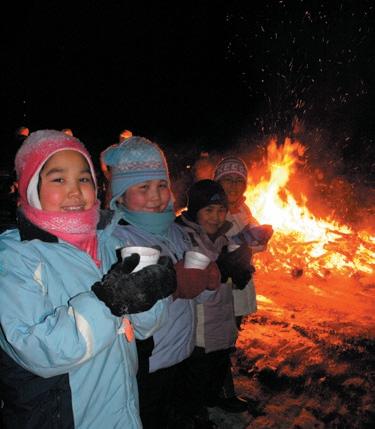
Joanne Eldridge, Sachs Harbour
Jimmy Komeak, Tuktoyaktuk
"Dr um dancing is a living tradition of the Inuvialuit. Our ancestors would gather after hunting to dance. I remember hearing the sound of drumming from my tent at night, when I was a kid in Tuktoyaktuk,” Albert Elias said. “However, in the 60s and 70s, drum dancing was in a lull, and Inuvialuit were getting concerned.”
With the help of Billy Day, a group of old timers persisted with promoting drum dancing during the 1960s. These old timers from Inuvik, Aklavik and Tuktoyaktuk did radio shows and made a special trip to Ulukhaktok in the 1970s and to other communities to host drum dancing workshops.
These old-timers kick started the revival of Drum Dancing, and it grew from there. The ISDP (Inuvialuit Social Development Program), under the IRC, obtained the funding needed for settlement communities to practice and preserve their traditions.

“My wife was a wellness coordinator in Ulukhaktok in 1990. A part of her job was to encourage cultural revival. We both didn’t know how to drum dance, but my wife’s uncle Jimmy Memogana and her mother, Agnes Nanogaq were singers and dancers.”
On one of his trips to Inuvik, Albert brought four drums back to Ulukhaktok from the ISDP. The ability to drum and sing seemed to return naturally.
“It was just like the old times, we sat around after drinking tea in Jimmy’s living room, then we grabbed the drums and started singing.”
“Young people were curious and came to every one of our practices. They showed interest and they learnt fast. It just blossomed from there.”
Within a year, the dance practices had to move from the living room into a gymnasium. “It was really something to see, the floor would be packed.”
“There were more fundraisings, materials were bought to make parkas, boots and gloves. All over the settlement regions, the communities joined at gatherings and special events to drum dance. It was big especially in Inuvik, Aklavik and Tuktoyaktuk. In Paulatuk, the young people found videos of drum dancing, some from Ulukhaktok , and took it upon themselves to learn the skills!”
The dance groups started to travel all over the world. They participated in cultural exchanges in Nome, Alaska, Chukotka in Russia, Germany, Australia and many parts of Canada.
“We learnt a variety of dances. The motion dances from Alaska are danced the same way each time, and are popular in Aklavik and Inuvik. In Tuktoyaktuk, you follow the beat of the drum, but dance as you like. The men yell out chants and stomp their feet, the women have more gentle movements. We told stories in song.”
“I like the Seal Hunt dance. There was an elder from Aklavik who did it really beautifully. It’s a story about sharing, being active, hunting your own food instead of waiting for it to come to you. It’s a short song but powerful in meaning.”
Today, drum dancing is no longer in danger of being lost. On New Year’s Eve, the Inuvik drum dancing society and dancers from nearby communities performed to a packed Ingamo Hall. It was especially beautiful because both young and old were dancing together, celebrating our unique culture. “There’s no membership card, anyone can join.” said Albert. “Drum dancing is a celebration of independence, our culture and self-esteem. I am happy to see a younger generation taking lead in drum dancing; some of the up and coming strong young leaders will take over and lead the songs. My granddaughter, she’s only four, but she was wearing a Mother Hubbard cover and dancing too.”
Justin Memogana danced alongside Albert Elias at the New Year’s feast and dance in Inuvik. The way he stomped, sang, drummed and shouted with his fellow dancers made his love of the art clear. He seemed happy and alive in every moment. Tusaayaksat catches up with the youth from Ulukhaktok, to discuss his impressions of Inuvik.
Justin Memogana from Ulukhaktok, age 17. I came with my mum to Inuvik, she’s taking the Teacher’s Education Program at the college. I’m thinking of going away for college.
You’ve been here for 5 months, what are your impressions of Inuvik?
It’s alright. It’s bigger, and there’s more stuff to do. There are pool games and X-box at the youth center. I also noticed a lot more drunks. I don’t really care for drinking. I prefer sports. P.E.’s my favourite subject. It’s competitive but fun.
In Inuvik, the culture is a little more mixed. In Holman, 95% of people are Inuvialuit.
I believe all people are equal; we should get to know them all.
When are you going home?
I’m going back to Ulukhaktok soon for a visit. I miss my family. We hunt a lot in Ulukhaktok, there’s duck, seal, char, lake trout, caribou, wolf…I’m not bad at hunting duck. I first learnt to hunt and hold a gun when I was about seven years old.
How did you become such a good drum dancer?

I was taught drum dancing by Jimmy (my grandfather) ever since I was one to two years old. It feels like I’ve been doing it all my life! I love it, it’s part of our lineage, and it makes me feel good inside. If I ever feel down, I just sing it all out. It also helps me understand the language. I have been learning Inuvialuktun from my grandmothers since I was very young.
Do you like Tusaayaksat?
Yes, I like to read news about Ulukhaktok!
Avid drum dancer Wendy Smith picked up drum dancing relatively late, but she feels it gives her a strong sense of identity. “I did not know who I was until I came home to Inuvik. Before that I travelled alot because of my father’s work and my studies. Now, I am relearning my culture. I saw a performance at Ingamo and felt really inspired.”
Top of Page: Inuvik Drummers and Dancers celebrating New Years at Ingamo with other drummers from the ISR Left: Justin doing what he likes best, singing and drumming his heart out!

Bottom: Wendy Smith and the drummers and dancers in a graceful formation.

“
here’s no membership card, anyone can join,” said Albert.
“Drum dancing is a celebration of independence, our culture and selfesteem."
“Qi laujarniqlu arrinirlu pitqusirivangnigaat taimangaaniin Inuvialuit. Sivulivut katilutik arrivangniqtuat anguniaruiramik. Nutaraublunga ami tusarrnaqivaktuat ilaanni qilautit unugaangan Tuktuuyaqtuumi” Albert Elias oqaqtuq. “Qanikun aglaan palangaqtuatun illiyuaq”
Billy Day mikayuqlugit taapkuat angayukliit Aklarvingmin, Inuvingmin, Tuktuuyaqtuuminlu tajva arriniq aulaqipsaagaat. Ulukhaqtuumunlu allanunlu arriyaqtuqpaktuat.
Taapkuat aulaqituaramik arriniq naupkagaat. Inuvialuit Social Development Program ikayuqtauvaktuq illisarnikun.

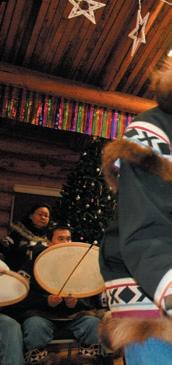
“Tuvaaqatiga ikayutauvaktuaq Ulukhaqtuumi 1990mi. Pitqusivut nalunaiqublugit, otiqtitqubugit. Taimani naluyuguk, aglaan Shirleym angaa Jimmy Memogana amaamaalu Agnes Nanugaq illisimayuk”
Sitamanik qilautinik Albert qarijiman Inuvikmin qilamik arrinirlu qilaujarnilu illitaat.
“Ingilraatun tajva niuqaraaqaaqluta Jimmym igluani atualakpaktuanni”
“Inuhaat takunraqlutik illaliutivaktuat, alianaigusuklutik qilamik illituat. Tajvangaaniin naubluni aasiin”
Inituyumun nuutuat inugiaksigamik. “Takunangnaqivialuktuat, illisarvik tatatpaktuaq”
“Anuraaliuqlutiklu pivaktuat. Ilaanni innilaanin inuit katimaqpaklutik arrivaktut. Inugiaksivaktuat akijutalutik Aklarvikmi, Inuuvikmi, Tuktuuyaqtuumilu. Inuhaat Paulatuumi takunaanik qungiaqlutik inmingnik illituat”
by Zoe HoSumuliqaa ongavanun arriyaqtuqpaktuat. Makuannun, Nome, Russia, Germany, Australia, Canadamilu.
“Allanik illisaqpatuani. Alaskamiut sayuutainnik Aklarvikmiulu Inuvikmiulu arrisuuyut.
Tuktuuyaqtuuqmiut qilautit malirutuagamijung tajva. Angutit qasangilaktaklutik, arrnat sangiksuyuitut, atuutit unipkaalgit”
“Taamnali nachiqniaqti alianaigivagara. Alex Gordon maani itilugu mumiyuvialukpangnigaa. Naitkaluaqtuq atuun suangayuq aglaan.”
Qangma arriniq suangasiyuaq. Okiuq nutaaq tikipalukaptigu inugiaksiyuani nakiliqaa Ingamo Hallmi. Alianaivialukpaktuat inirrnirilu inuhaalu atauchimukamik quviasuklutik.
"Illaani tajva sivuliuvalikniaqtut. Inrutaaluga sitamanik okiulik atigibluni saavipaluliqtuaq.”
“Qinaliqaa illaulayuq akilichinaituq” Albert oqaqtuq. “Arriniq quviasuutauyuq tajva ovapquagutiptigun, pitqusiptigun. Quvianavialuktuq takugaini inuhaat illauyuat."

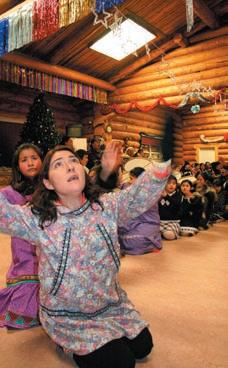
Justin Memoganalu Ulukhaqtuumin Albert Eliaslu arrimayuak nutaaq okiuq tikinaptigu Inuvikmi. Qoviasuktuq nalunaituq takunakaini . Apiqsulakniaga ova Tusaayaksat savaktingata.
Kinauvit?
Atirra Justin Memogana, Ulukhaqtuumin, oqiuruaqtuami 17nik. Amaamaga illisariarman Inuvingmuqatigiyara. Illisaruktungali sumiliqaa.
Qangmunga aglaan qanoq Inuvik issumatigiviung?
Angivikami Inuvik suliyaksat inugiatqiyauyut olapqinikun. Inugiatut imingayut takunaqtut aglaan, sungiqutigingitkiga ovanga imiq. Ovapkun qoviagiyara pilgusaun olapqinikun,alianaigiblugu.

Qakugu Ainiaqpit?
Otilakniaqtuami qanikun illatka takusulirapkit. Angoniaruuyugut Ulukhaqtuumi innapta, nirutaiyuq, tingmiat, nachiit, iqaluit, tuktut, amaqut…tingmiaqsiurama sapiqsaitunga. Nutaraublunga mikiblunga angoniaqtaliqtuami.
Suuq Ova momiyuvit?
Mikitilunga ataatangma illasutivagaani, illausuuyunga qangmungaaglan alianaigivialukapku qoviagiblugu. Aliachagaangama atualakpaktuami! Inuvialuktunlu illiarman. Ataataangma illisautisuuganga mikitilunga.
Tusaayaksat Taiguqpakpiung?
Eh, Ulukhaqtuum sujutait taiguqpakatka.
IPY, International Polar Year is celebrating its 125th anniversary, and Canada is eager to participate. Our government has pledged $150 million in funding over 6 years to the polar research project. The IPY builds on the expertise of about 50,000 people and scientists from over 40 countries, and is the biggest scale study of its kind to date.
There will also be an emphasis on social aspects in the study. Canada’s key targeted project in the IPY hopes to provide insight into the most crucial challenges for the Canadian north - climate change impacts and adaptation, and the health and well being of northern communities.
A CBC news report said aboriginal delegates at the Arctic Leader Summit in Hay River expressed concern about sharing traditional knowledge with others. They also feared that their contributions to the IPY would be unrecognized.
Duane Smith, IPY committee member and executive member of 7 organizations representing Inuvialuit and Inuit concerns, sees the IPY in a different light.
He said by participating in the International Polar Year 20072008, Inuvialuit could help themselves and the Inuit by being a unified voice on the global stage.
Like the years before, IPY research in the North will again focus on the Inuvialuit region. The rest of the world now sees the circumpolar north as a unique ecosystem that acts as a barometer of Earth’s health.
The IPY’s goal is to gather information about land, water, planet, atmosphere and life, to make the public “realize just how
much the cold ends of the sphere really do influence us”.
Duane SmithClimate change due to global warming is evident especially in the Polar Regions. According to reports, within the lifetime of a child born today, there will be no more ice in the polar oceans during the summer months. The Inuit have also found contaminants such as DDT and PCBs in our environment and country food. The pollutants did not originate from the arctic but were brought in by sea and wind currents.
Changes like these impact the Inuit’s traditional way of life, especially on those who depend on harvesting animals and food from the land for survival.
Statistics reveal that aboriginals in the North also live below national standards in terms of employment, education and living conditions.
To rectify these issues, Duane says the Inuvialuit need to adopt a broader perspective beyond what happens within our communities, to “Get involved and be proactive, have patience and ask questions”. “What happens in the circumpolar regions obviously affects the rest of the world and vice versa.”

There will be increased research related activity for the IPY 20072008 as early as this summer, especially in the Inuvialuit Settlement Region. Due to the shipping seasons, a lot of researchers will store their equipment for ice-monitoring and helicopter fuel in the region, so they can be ready in Spring 2007.
There will be benefits such as increased employment opportunities, and Northern communities will be part of research, education, and hands on training activities.
“When people see ice monitoring outside of Tuk or Sach’s Harbour, they might think it’s just for somebody out of Winnipeg, Ottawa or Halifax,” said Duane, but supporting these studies will help us get “a bigger picture from the circumpolar perspective”, and help us speak for our peoples and land.
Duane feels the Inuvialuit should meet and discuss how we
There are many problems to solve, and “Inuvialuit should recognize their power from the grassroots level. They can influence decisions made for their community, at regional and national, even international levels.”
want to move forward as a people, to promote our voice internationally.
He was not always as knowledgeable about what happened in the rest of the world. When he was about 12, his non-native school friends came back from Disneyland. He did not know where it was. “You know, where Mickey Mouse is!” said his friends. At that moment, it dawned on him that not everybody spent their summertime out on the land, enjoying whaling and nature. His worldview expanded further after he got his education in Natural Resources, and as he took on positions in renewable resources and then the Inuvialuit Game Council, where he had the privilege to work under Andy Carpenter.
Over time, Duane accumulated the experience and knowledge he needed in his current positions as Chair of the Inuvik Community Corporation, Vice President of Inuit Tapiriit Kanatami (ITK), and President of Inuit Circumpolar Conference (ICC Canada). He is also on the boards of directors of the IRC (Inuvialuit Regional Corporation) , Arcticnet and the Aboriginal Pipeline Group. These organizations work together to provide conduits for the voices of the Inuvialuit and Inuit to reach national and international audiences. Duane travels frequently on behalf of all Inuvialuit and Inuit.
The IRC and community corporations collect the opinions of Inuvialuit communities from regional representatives, developing policies and programs in response to the communities’ needs. These proposals then go to the national level of the ITK, which represents the 4 Inuit regions in Canada. The ITK lobbies the government to ensure there is adequate federal support and funding to implement the programs. In the same way, organizations such as ICC Canada and Arcticnet provide platforms for Canadians to lobby their issues at the international level.

On the home front, land claims are continually under debate between the government and the regional land claim groups. Under the IFA signed June 5th 1984, the 3 levels of government (federal, territorial and Inuvialuit) have an obligation to engage the Inuvialuit in meaningful participation in the Northern and national economy. Duane says currently our socio-economic progress is slower than before the signing of the IFA, and it is an ongoing process to work with the 3 governments to improve the quality of life.
over this long and dragged out process of getting our needs as Inuit recognized. A youth has posted a blog on the ITK forum, saying that his “life as a young Inuk” is one where he “won’t succeed”, because he is controlled by those who have “exploited” the Inuit way of life through bureaucracy. Duane suggests that youth who want to make a difference to take action. There are groups they can join, such as the National and International Inuit Youth council (www.niyc.ca). There are also exchange programs for eager, outgoing motivated youth to areas within Canada, Greenland and Denmark to have hands on experience in activism.

“Our strength lies in our solidarity,” said Duane. There is encouraging headway being made for recognition of Inuit rights as we step into the international arena. Notably, ICC Canada under Sheila Watt-Coultier in 1998 achieved putting Inuit health firmly on the world agenda. The Stockholm convention was established to eliminate POPs (persistent organic pollutants) from further distribution globally.
ICC Canada has also spent the past year working in South Africa to raise global awareness on the Arctic as an indicator of Earth’s health; it stood up in Beijing at the Global Environment Facility Executive Council meeting, for Indigenous issues to be recognized as distinct from other stakeholders, and voiced our concern to ensure Inuit traditional knowledge is valued at the World Intellectual Property Office in Geneva.
At the national level, organizations like the IFA ICC (Inuvialuit Final Agreement Implementation Committee – made up of the federal, Yukon, GNWT and Inuvialuit government) gather to resolve outstanding issues. Inuvialuit contractors finally got the go ahead to clean up the abandoned metal depot at the area bordering Kittigaryuit about 2 years ago. The IFA ICC persisted for over 30 years to get the government to recognize sites of Inuvialuit cultural significance.
30 years is a long time, but these accumulations of progress are the ones that Duane believes we have to build on to pull us through to success in getting our issues recognized.
However, apathy and frustration can grow in young Inuit
“It’s one thing to sign the agreements, the next step is the ongoing issue of its implementation. The territorial government still doesn’t acknowledge fully the rights the land claim groups have. The debate is on the translation and implementation of the wording in each of the land claims.”

 by Zoe Ho
by Zoe Ho
How far would you go to ensure your family has a great Christmas? Some residents of Tuktoyaktuk and Aklavik went as far as to risk their lives and go against the law so their families can get to Inuvik for the festive season.
Despite the threat of $800 fines from the RCMP and the unusually warm winter which made parts of the ice road too thin and dangerous to drive on, these residents of Tuktoyaktuk and Aklavik felt driving was their only option. Flying was unaffordable, and Inuvik was where they wanted to celebrate with family and get cheaper supplies. The ice road officially opened to light traffic on 9 Jan 2006, although parts of it were still rough and narrow.

Hopefully, residents of these small communities will not have to put up with their lack of travel options for much longer. The Department of Transportation for the GNWT announced a $700 million proposal “Connecting Canada from Coast to Coast to Coast” last November. This proposal includes a $15 million budget for building 22 km of gravel highway from Tuktoyaktuk to Inuvik.
“It will take a lot of worry off our hands,” said Jackie Jacobson, Mayor of Tuktoyaktuk. He is working hard with his team and the government on getting “Source 177” approved; he said the community needs the gravel road to end the isolation they live in.
“ It costs $300 a ticket to fly from Tuktoyaktuk to Inuvik, and another $1300 to go from there to anywhere else,” he said. “It will be better for our youth if they could travel and open up their horizons.” At this point, Tuktoyaktuk only has one community bus that transports the students to swim meets, baseball tournaments and minor hockey in Inuvik.
The community also needs a gravel road badly so they can have amenities such as a cemetery, a solid waste site, a sewage lagoon and building materials.
Jackie said, “Tuktoyaktuk is almost level with permafrost, we can’t build new buildings on lots. We obtain building materials by taking apart old buildings.”
William Nasogaluak, previously Mayor of Tuktoyaktuk, said it is usually elections and oil exploration that revives government interest in small communities in the north.
“It is 30 years too late,” he said of the proposal to build a highway connecting the north to the rest of Canada. “I hope this is not an election ploy.” The government had abandoned the work on the Mackenzie Valley highway in 1977, when the Berger inquiry was released and a 10-year moratorium on oil and gas development was imposed.
In the 2004-2005 Fraser Institute Annual Survey of Mining Companies, the Northwest Territories was ranked 4th out of 64 countries worldwide in terms of mineral potential. However, it was also ranked last in terms of infrastructure. There is renewed interest in gas and oil exploration in the Mackenzie Delta, and aboriginal groups are now development partners in the Mackenzie Valley Pipeline. To attract mineral and oil industries, the government has to improve the current system of transportation.
William Nasogaluak believes if the government wants to build a road across the ISR to support pipeline developments, they should also “put something back” into the communities. “If they are using nonrenewable resources on our land, it is only fair they provide us better medical services and schools.”
He said the majority of the tax revenue from oil exploration will be going to Ottawa. In the GNWT government’s proposal, economic modeling estimates that southern Canada will capture approximately 71% of jobs and 85% of taxes.
Vince Steen from Tuktoyaktuk feels that although the people of Tuktoyaktuk welcome the economic benefits from the building of an all Canada highway, ultimately the part of the proposal that “we are most interested in is the road from here to Inuvik”. Like William Nasogaluak, Vince hopes politicians will fulfill their election inspired promises.
“ Tuktoyaktuk is really encouraging them to follow through with building the highway. We look forward to the Community Corporation and hamlet growing as a result.”
While William Nasogaluak said the only opponents to the proposed project are elderly who fear change, Vince said Tuktoyaktuk will be vocal at the hearings in relation to where gas facilities will be built. Many in Tuktoyaktuk are opposed to large 737 runways being built at Parson’s Lake and Summit Point, as it could affect the migration patterns of caribou in the area. He said they would prefer to see the facilities installed in Tuktoyaktuk instead.
“ There seems to be a fair amount of gravel along the highway route, but of course it’s first come first serve. The Inuvialuit would like to see their needs satisfied before the oil companies’ needs, but that doesn’t mean it will happen that way.”
Despite the concerns, Vince said, “ A majority of people are in support of the highway. Most of us are prepared to deal with it when it happens, even though there are no doubt concerns about how it will affect housing and access to hunting.”
Meeka Steen, aged 19, is definitely excited about the gravel road from Tuktoyaktuk to Inuvik. “It will be fun! We won’t be isolated anymore. We will be connected to everything.” She will have expanded opportunities for education, and is now considering being trained for a career in hairdressing.
The highway will also have an affect on businesses, mostly positive. Non-renewable resource industries like hydro and tourism will get a chance to boom as more people and goods would be able to travel to and from the small communities.
Much of the increased employment impacts will occur outside of the Northwest Territories.
Economic modeling estimates that southern Canada would capture approximately 71 percent of jobs and 85 percent of tax. The construction components of the $700 million investment to be considered include:
1. Construction of an all-weather road from Inuvik to Tuktoyaktuk


2. Extension of the Mackenzie Valley Winter Road from Fort Good Hope to the Dempster Highway south of Inuvik

3. Construction of an all-weather road from Wrigley to the Dempster south of Inuvik
4. Construction of permanent bridges across the Mackenzie and Liard rivers on the Mackenzie Highway
5. Upgrades to the existing Mackenzie and Dempster highways
Aklak might be one of the few companies that will be adversely affected. Air base manager Ken Dalton said “When the road is open during winter, our passenger volumes drop along with the freight loads. When the all seasons road opens, our business will be affected even more”. When asked whether Aklak had plans to deal with the road’s effect on their business, he said it will take awhile for the highway to be built, so there is interim time for alternate solutions.
Most importantly, the highway and 22km of gravel road will allow those born and raised in Tuktoyaktuk to continue sustaining a living there. Jacobson said, “We are looking forward to living off the land and the 18 months of work and 12 years of drilling the oil industry will bring.”
Right:
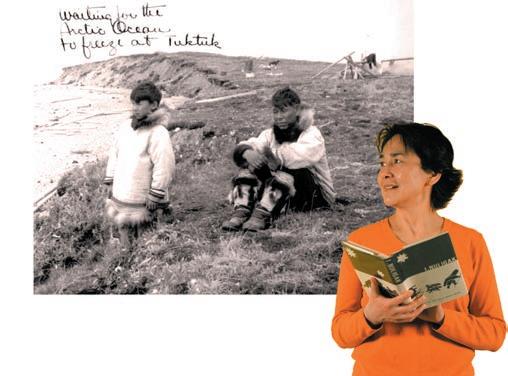
, the first autobiography written by an Inuvialuk, will soon make its debut on APTN in the form of a documentary. It will be aired in both English and Inuvialuktun. The film is gorgeously shot and sincerely made. Besides the telling of Nuligak’s story, his descents are also interviewed in the film. They discuss personal aspects of remaining connected to the land. Noel and Turpin Cockney, Nuligak’s great grandson and grandson, play Nuligak in his youth and later years respectively.
In his final days at a hospital in Edmonton, miles away from his home, Nuligak felt compelled to complete his documentation of how the Inuvialuit lived before the arrival of the tan’ngit (foreigners), and how the tan’ngit forever affected their identity and culture.
 by Zoe Ho
by Zoe Ho
Cathy Cockneyis one of Nuligak’s grandchildren and manager of the Inuvialuit Cultural Resource Center. She has followed in her grandfather’s footsteps to make sure oral tradition becomes recorded and can be passed on. Tusaayaksat invites her to discuss the documentary, the book, her grandfather and his impact on her life. (Below is an edited transcript of the conversation.)
Tusaayaksat: What did you think of the documentary?
Cathy: To see my grandfather’s life story played out was amazing. I was really impressed with how they portrayed him, especially as an orphan. I read about his relationship with his grandmother, but to actually see him pull her around in a sled because she was crippled, taking care of her, being guided by her on how to survive and then having to deal with her death when he was only ten, I could feel how he must have hurt. She wasn’t afraid to face death alone, a situation which would drive anyone crazy nowadays.
Tusaayaksat: What was inspiring about this film?
Cathy: It really focused on the determined people of the North. Like Nellie said in the film, you need that will to survive.
Photo of Cathy by Zoe Ho Left: Nuligak left a legacy in his words for Cathy to look up to. Below: Bonnie Bell, Nuligak's schooner. The Cockney Clan, with Nuligak in the back row, 2nd from the right.Even though so many of our people died from lack of immunity to diseases from the tan’ngit, we still carried on our culture. Imagine being in a population of about 4000 people and have three quarters of them die suddenly. Especially when he talked about Kittigaaryuit, and there were only 2 men left to clear away all the dead. Nuligak was as an orphan, and he traveled, hunted and worked wherever food was.
The film documents the invasion of the whalers, how they assaulted our culture, and the diseases they brought; it is also about the Inuvialuit taking a stance, refusing to sign a land settlement treaty with the government just for $5 per person.

Tusaayaksat: The film also interviewed you and many of Nuligak’s young descendants.
Cathy: We represented how his values were transferred onto the younger generation. Topsy, my sister is in communications, she directs the documentation of our language and culture as head of ICS. My area is similar, but more anthropology based. Our mum taught us a lot about our past. Richard Gordon is well versed on the history of Herschel Island as Parks Warden, he talked about the whalers and the waste then of whale meat. He also guides the kids on how to hunt and not repeat that waste.
I thought I would be shy in front of the camera, but because I was talking about our culture and my grandfather, I felt
don’t have any hard feelings about their arrival otherwise because our people still passed our traditions on to our children.
We are going through quite abit of change. A lot of kids are pursuing higher education, and are not going out on the land as much as we did, and we don’t go out on the land as much as our parents did. Thankfully, a lot of our oral history is being written down, and our language is being taught in schools.
Tusaayaksat: Does your grandfather inspire how you live?
Cathy:
completely comfortable.
Tusaayaksat: How do you feel about the foreign culture coming in?
Cathy: When I was in University, I read more and more about our culture, and I became angry at how foreigners treated Inuvialuit women, so I stopped reading about that area. But I
I knew we didn’t always live in a house. I learnt from books and archaeological reports at first, and then I asked my mother, she knew I was interested in the past and wanted to document it. She became a storehouse of information for me. I also interviewed many elders, who were so happy to have an Inuvialuit interviewing them about their past, they shared a lot of information with me.
Tussayaksat: Is that why you work for the ICRC now, and before that the ISDP?
Cathy: Yes, Elisa and I worked on my first major oral history project for the ISDP, on Kittigaaryuit. I once interviewed elders about how they used the whale, and I found that so interesting, they used everything! Collecting that information gives you so much access to your culture and how we are all connected in some way or other.
Nuligak’s journey is also featured as a permanent online exhibit at the Prince of Wales Northern Heritage Center.
Explore Inuvialuit place names with Nuligak at http://www.pwnhc.learnnet.nt.ca/inuvialuit/
He’s taught me to be proud of our culture, of who we are and where we’re from. If you don’t have a past you don’t know where you want to go. Even when I was very young I always wanted to know where we came from.

Noel Cockney said he liked to “run all over” as his team’s forward in basketball. Indeed, this 16-year-old youth is going places! He played in basketball competitions at Yellowknife, ran at the NWT Track and Field Championships at Hay River, and is an avid volleyball and soccer player in school. You might have seen him at the Inuvik pool on Sundays, working towards his certification to be a lifeguard. He has also been snowshoeing pretty hard, practicing a whole year for the Arctic Winter Games. His active participation in sports is certainly paying off; he is one of the young athletes who qualified at the Arctic Winter Games Territorials. This March, Noel is going to the Kenai Peninsula in Alaska to represent us in the Snowshoe Biathlon.
Last year, he tried out for the same category but missed getting on the team by four seconds. That must have been pretty devastating, but if you asked Noel what is the motto he lives by, he will tell you, “Never give up on anything
These are wise words from a young man. I suggested to him being 16 must be a difficult time, because it was the time when you discovered adults are not perfect, and there is a lot of peer pressure to be “cool” or lose popularity. He said easily, “Those are part of life’s
“There is a lot of peer pressure here. A lot of kids are getting into drugs and alcohol.” Some of his friends have succumbed to substance abuse, but Noel is not interested to try it. He has chosen to stay away from the influence of those friends. “Is it because your mum is in the RCMP?” I asked and he laughed.
“I would like to be a lifeguard for a living, but my ultimate goal is to be a RCMP officer.”
“We moved to Inuvik from Tuktoyaktuk about six years ago. At first, it was difficult, but I made a lot of friends and felt totally comfortable eventually.”
Noel is the only Inuvialuit out of 6 people in the lifeguard certification course. He does not believe in differentiating people because of nationality or race, and has friends from all groups. In a few months, he will achieve his lifeguard certification. He has gotten a bronze medallion and will soon be getting his bronze cross. He prioritizes his time for sports and school. On January 31st, he broke the school’s mile run record, coming in at 5 min 16”.

that you do. Regardless of whether you fail or succeed, there is always something you can win out of it.”Pictures from top: Noel at AWG snowshoeing trials Rockclimbing IDC Leadership Expedition Training for record breaking

is sometimes hard to do, but I have no regrets for doing so. I like to travel and experience new places, but I know that I will always come back home eventually.
I was 14 when I first left my family and friends in Aklavik. My parents gave me the option to move with my sisters who were attending the University of Saskatchewan in Saskatoon more than 1400 miles away from Aklavik. They figured this experience would give me a better education and more opportunities.
This move caused many changes for me to adjust to. Saskatoon had a much larger population of 205,000 people compared to small town Aklavik, with its population of about 800. It was the first time I lived away from the security of my parents and home community. I found I was the new kid not only in school, but I was also culture shocked by the city and its whole different way of life. I wanted to just quit and go home, but I was raised to try my best and to finish things I start. Besides, how would you know if you liked something or not, unless you tried it? So I toughed it out and stayed. At the end of that year, I successfully completed grade 10, made many new friends and was happy I did not quit.
By Bobbie Jo GreenlandI spent a few years gaining work experience at a variety of jobs after high school and college. I liked my work at the Gwich’in Renewable Resource Board the most. I worked with the Environmental Knowledge Project and became active in conservation of the Porcupine Caribou Herd.
I was soon appointed as the alternate board member for GTC on the Porcupine Caribou Management Board and jumped right into the politics and education awareness efforts, to defeat US Government attempts to open the Caribou Calving Grounds in Alaska to Oil and Gas Development.Activist work led me to travel frequently to almost every state in the USA, making presentations to various Groups and meeting with political figures in Congress and Senate.
I also worked with the elders in the communities, documenting their traditional knowledge and stories. I learned a lot from them and they played a huge role in my decision to leave home again in order to get a University Degree.
Having the opportunity to be part of the Environmental Knowledge Project was worth taking a break from my studies. In June 2005, I applied for the Circumpolar Young Leaders Program (CYLP) and was accepted. I left Canada last September to begin a 6- month internship at the Indigenous Peoples Secretariat (IPS) Office in Copenhagen, Denmark. The CYLP provides Young People in Northern Canada with training and work experience in other Countries. I encourage the young people in the North to take advantage of the opportunities that are available to them. Working at IPS office has allowed me to build my network with people from all levels of Government and International Organizations. These experiences have also given me the opportunity to share my culture, while learning about other cultures around the world. While I do encourage Academic Education, I definitely endorse that our young people find travel and work experience opportunities for themselves. I think such opportunities will enhance their leadership skills and personal development.
My appreciation for the Gwich’in and Inuvialuit cultures motivates me to work for the promotion, recognition, preservation and wise management of issues such as Indigenous Rights, Culture, Wildlife, Environment and Sustainable Development. I would like to do what I can to help improve the lives and future of our people.
For more information on:
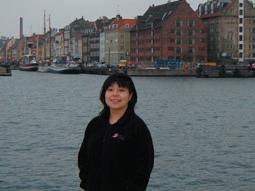
I needed formal education to get management positions that would let me take part in and influence the decisions that impact our people and communities.
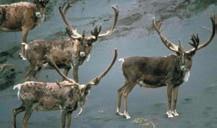
The Inuvialuit’s relationship with caribou runs deep. From the very beginning, their survival in a harsh environment depended on the protection and sustenance provided by the caribou’s meat and skins. Hunters to this day are grateful, and enact rituals to give thanks to the animals they harvest, but much is changing for a new generation of hunters.
Many no longer know how to use all the parts of the animal. We ask Frank Pokiak, veteran caribou hunter and chair of the IGC and WMEC to share his traditional knowledge.
“Nowadays when I go on the land, I see people leaving behind the head and legs. They only take the meat because they don’t know what to do with the rest. I take home what they leave. If you cut open the leg you will find tasty marrow. We’ve brought our grandchildren up to know that.”
“My grandchildren were telling their classmates which parts of the caribou they eat; eyeballs and brains, head and tongue. Their classmates are grossed out. If you don’t cook the eyeballs too much, you can use it as a rubber ball. If you want to eat it, you have to cook it until it’s really soft.”
Frank laughs. Different cultures have different perspectives of what “delicious” means. The Inuvialuit follow the caribou’s migrating patterns, and Frank’s father took him to Aklavik to get his first caribou when there were none in Tuktoyaktuk. It was rite of passage for a young hunter. “We celebrated. My whole family shared it. I sent the first few caribou I got to family members in Tuktoyaktuk. We have a big family, it didn’t last very long.”
Caribou can also be made into spiced jerky and dry meat. “It is very good. We also cook the sinew from the legs, and boil the hoofs until its very soft. The caribou has a part called the “bible”, it looks like it has pages on it. We clean and boil that. There’s another part, the “sausage”, near the lower intestines. We stuff it with small pieces of kidney, tongue and heart. The waste track, I am not sure if a lot of people use it, but if you turn it inside out and fry it with meat until it’s crispy, man it’s tasty! There is also a coating of fat over the guts, we wash and hang it dry for frying with meat.”
“We like the natural flavour and don’t really spice it. We only add spices to caribou soup, and eat that with plain rice and onions.”
Many Inuvialuit prefer the flavour of caribou to frozen meat choices at supermarkets. A younger hunter, Dougie Joe would take caribou “any day” over other meats. He has hunted by himself since he was fourteen, and was taught by a great number of his family; “stepfather, uncles, aunts, grandmother and great uncle”. He knows most of the traditional knowledge, that the “bible” of the caribou is taken from its stomach, but has

never eaten it. He skins and butchers the caribou he catches on the spot, and before discarding the carcass, he slits its throat to let the spirit out. He believes this allows him to catch more caribou at his next hunt.
He uses most of the meat, “The women in our home are matriarchs. I give the meat to them and they make it into dry meat and do the cooking.” He eats the eyeballs of the caribou and roasts the head, but has never used the eyeballs as bouncing balls, because he was taught never to play with his food.
To catch caribou, he said you have to “sneak around them” because they are “skittish”. You have to be quick on your feet to stay behind their field of vision. You need to make clean shots to ensure a maximum amount of usable meat.

While Dougie wants to live off the land like his ancestors, he lives in town periodically for seasonal work. Sometimes he works with researchers from UBC, Carlton University and Indian and Northern Affairs, but most of his other gigs involve manual labour.
He said he has not seen caribou on the road to the airport from Inuvik since he was fourteen. Before that, he used to catch so much caribou there, he had to make two trips in a day to get the harvests home. Now, he has to travel at least 150 miles out of town to hunt, following the indication of satellite tracking collars that are put on caribou by wildlife management organizations.
“I am worried about the future of the caribou. It seems like oil and gas exploration is changing their migrating patterns. They’ve just approved oil drilling in Alaska, the above-ground pipeline seems to affect their migration path, especially from here to Tuktoyaktuk,” he said.
There is amazement in their tones when Frank and Dougie talk about caribou. They delight in how you
can use their skin to make “mattresses”, warm, cushy and portable bedding for hunting trips; they know fall is the best time for harvesting the skins to make winter clothes, and summer is when you harvest skin to make thinner coats. Frank said mukluks are especially beautiful when the skin from the caribou’s legs are used to make patterns. “The hair doesn’t shed from there.”
Dougie laughs about caribou mating habits; they pee on themselves to make “cologne” to attract females, giving up on eating and starting to fight. Both hunters know rutting means the meat is less fat, and that females are the easiest to catch. They both believe in hunting and providing for their families. Frank is happy to say caribou hunted by those in Tuktoyaktuk are shared with the less fortunate, those who are unable to go out on the land.
As experienced elder and younger hunter, they both share concern about the reported decrease in numbers of caribou, and the resulting harvest quota that could be imposed.
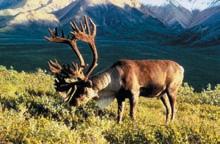
Frank said, “According to surveys done last year, caribou herds are declining. But ENR will do another census in June this year to see if it’s true. The wildlife co-management bodies support the collaring of caribou so we can stay informed about the species. We will get a better idea after the next count.”
“After the results from the last survey, people from the community of Tuktoyaktuk with TK (traditional knowledge) said there’s an area that was missed. And after a meeting in Whitehorse with the Inuvialuit Game Council, ENR found about an additional 2400 caribou that weren’t included”.
There are also issues about herds being separated into three different herds. “You can’t identify the difference visually,” Frank said. “Surveys found the herds to calf in three areas, and so scientists named them Bluenose West, Bluenose East and Cape Bathurst.”
From the census last fall, the Bluenose West herd is said to be down to 20,800 animals from 74,300. The Cape Bathurst were down to 2,400 from 10,000, and the Bluenose East were down to 66,600 from 104,000.
Eddie Dillion of Tuktoyaktuk said, “It is frustrating. They are trying to make us turn to oil instead of sustainable resources like caribou.”
Frank said the people are watching closely for results from the next count. The good thing about Northern life is that all are allowed to speak before final decisions are made. “We should get more people to talk about it,” said Frank, “They missed half the herd last time, so we hope the new numbers will be more positive with the help of traditional knowledge”.
Nowadays when I go on the land, I see people leaving behind the head and legs. They only take the meat because they don’t know what to do with the rest. I take home what they leave. If you cut open the leg you will find tasty marrow. We’ve brought our grandchildren up to know that.”Photo by Dean Biggins, USFWS
This summer Parks Canada hosted its second Artists in the Park camp in Ivvavik National Park. For ten days in July five artists camped at Sheep Creek Operations Centre on the Firth River. Those ten days flew by, with lots of hiking and exploring the park, and even more carving, painting, sketching, print-making, and filming!
Artists in the Park offers Inuvialuit and non-Inuvialuit artists an opportunity to create art in the inspirational natural setting of Ivvavik. The first year of the program was in 2003.

Inuvialuit artists Audrea Loreen-Wulf from BC, Ronnie Felix from Yellowknife, and James Ruben Jr. from Paulatuk participated in the 2003 program.
A Young Artists in the Park camp was held in 2004. Fiona Joe, Hebert Kowana, Eric Kendi, Saiyla Inglangasuk, Dustin Edwards, and Crystal Saunders spent their days hiking, sketching, painting, and learning new art skills. For their final project they worked together to create an art booklet, using print-making techniques they learned at the camp. In 2005 Elaine Alexie and Patrick Joe from ICS also joined the camp, to capture some of this creative energy on film. They made a documentary about the program, which was recently aired on Suaangan.
Another Artists in the Park program is planned for August of 2006. If you are an artist or you know an artist who might be interested in this opportunity, please contact us at 7778800, or at inuvik.info@pc.gc.ca for more information about how to apply.
Each year Parks Canada staff visit every Grade 4 class in the ISR. We bring posters and pictures, scavenger hunts, videos, and games, and by the time we leave each student is a proud graduate of the Environmental Stewardship Certificate Program!


This program was created for grade 4 students to help them understand their northern environment and learn how they can act to respect and protect it. Students learn about the plants, animals and ecosystems around their own communities, and about the connections between the living and non-living parts of the environment.
So far this school year we have brought the program to classes in Sachs Harbour, Inuvik, Ulukhaktok, Fort McPherson and Tsiigehtchic. Over the next few months we will bring it to the schools in Aklavik, Tuktoyaktuk, Paulatuk, and Deline.
- T here are over 1300 pingos on the Tuktoyaktuk Peninsula
- P ingos only grow where there is permafrost
- About a quarter of all the pingos in the world are in the Tuktoyaktuk area
- T wo of the world’s biggest pingos, Ibyuk and Split, are in the Pingo Canadian Landmark , just outside of Tuktoyaktuk

- I byuk Pingo is 49m (160 feet) high – that’s the tallest pingo in Canada, and the second tallest pingo in the world!
-
Ibyuk Pingo is at least 1000 years old, and it’s still growing 2 cm a year
- The vegetation that covers pingos protects the inner ice core from melting. If the ice is exposed, the pingo slowly collapses
- Scientists have found old collapsed pingos in Ireland and the Netherlands, which means once it was cold enough there for permafrost
- Parks Canada and the community of Tuktoyaktuk are planning new boat facilities and an interpretive trail near Ibyuk Pingo in the Pingo Canadian Landmark .
Photo by Rob Buchanan by Zoe HoFirst Row: Ellen Smith, Rosemarie Kuptana, Elizabeth Crawford-Hansen, and Judy Francey.
Second Row: John Holman, John Banksland, Andy Tardiff, Simon Routh (he was there to discuss the SAM school archive project), and Albert Elias.

First Project: A Reunion for Survivors, Church and Government
TThe Beaufort Delta Residential School Society has big plans. First, it will register formally as a society to access federal funding, then from July 10th to the 14th, it will pull together the largest reunion party in the NWT for survivors, church and government. It believes these three groups need to communicate to bring on healing.
“We want to all come together and bridge the gaps, to celebrate the victories that did come out of this system. Many are saying let’s have a happy occasion; we’ve gained friendships and education. Some people will be impacted by what we are doing but there will be caregivers in place for them,” said Ellen Smith, former residential school student.
Ellen and Elizabeth Crawford-Hansen conceived the idea of a Beaufort-Delta reunion in1997. They drew up a fundraising proposal with the help of their society, the Beaufort-Delta and Sahtu caregivers.
The society expects about 1000 attendees, made up of former students (from Aklavik, Inuvik, Fort McPherson, Herschel Island, Fort Providence and Hay River), caregivers, church leaders, aboriginal leaders, and government officials.
“The stories of residential school survivors from the NWT will finally be recorded like they were in Where are the Children, the Aboriginal Healing Foundation’s exhibition on Healing the Residential School Legacy ”, Ellen said.
The society recognizes it is not easy for survivors to speak publicly about their experiences, however they urge survivors to speak up so they can reconcile the past for the younger generations.
Besides hiring coordinators and facilitators, this project requires support from volunteers in the ISR
communities. Ellen said, “There’s been a lot of people saying can we do anything? And I say yes, this is the time for you to help.”
Positive accelerations in the preparation process have taken place ever since Rosemarie Kuptana came on board in February. She will help finalize the proposal and do the paperwork needed for society status. The National Residential School Society has also donated a $50 paperwork fee for the society to be legally registered.
Now they are looking for an organization with financial expertise to administer their funds. Ellen said they have sent out requests for help to the IRC, the Gwich'in Tribal Council, the Mayor of Inuvik, and Chief Richard Nerysoo.
“The IRC are sorry they can’t accommodate our request as they are swamped with the pipeline, but they promised to assist us in any way they can as time goes on, with in-kind donations,” Ellen said. Funding for the reunion will be sought from Indian and Northern Affairs Canada, Government of the Northwest Territories, IRC, GTC, the National Residential School Truth & Reconciliation Committee, and the Aboriginal Healing Foundation.
The Town of Inuvik, SAM School, Aurora College, the Beaufort-Delta Health & Social Services Authority, the Family Counseling and Justice System and the ICS have provided positive responses, donating facility space and manpower. Individuals who would like further information can contact John Holman at 777 5109, John Banksland at 678 2412, and Ellen at 777 5279/2510.
n January 16, Nellie Cournoyea (Tuktoyaktuk) is elected as returning chair of the Inuvialuit Regional Corporation (IRC). She received 33 out of 41 votes. Patrick Gruben, who ran against her, received 8 votes.

The election of the IRC chair was held in the Community Corporations of the ISR. 41 instead of 42 directors from Aklavik, Ulukhaktok, Inuvik, Paulatuk, Sachs Harbour and Tuktoyaktuk voted in this election, a director seat at Aklavik was vacant.
This will be Nellie’s sixth two-year term. She was first elected as Chair of the IRC in January 1996. Her responsibilities of administering the benefits received by the Inuvialuit under the Inuvialuit Final Agreement will continue.
Nellie was the former premier of the Northwest Territories, and one of the original negotiators and signatories of the Inuvialuit Final Agreement.
Congratulations Nellie!
The issue of Access and Benefits agreements between the Inuvialuit Regional Corporation (IRC) and the pipeline proponents was recently raised at the National Energy Board (NEB) hearings in Inuvik. IRC is pleased to clarify its role in this regard.
The Inuvialuit Final Agreement (IFA) provides IRC with the authority to manage Inuvialuit lands and negotiate economic benefit agreements on behalf of the Inuvialuit.
In November 2003 the IRC Board established a negotiating team to negotiate Access and Benefits Agreements with the pipeline proponents. The negotiating team consisted of the IRC Chair and CEO, the Chairs of Aklavik, Inuvik and Tuktoyaktuk Community Corporations, senior IRC staff and supporting consultants.

Following two years of negotiations, the IRC board, on November 24th, 2005, gave prelimary approval to the draft terms as recommended by their negotiating team. The Board determined that prior to formally endorsing the agreements, the negotiating team should present the contents to the membership of all community corporations and bring back any issues or concerns raised to the IRC board for their consideration.
Presentations have since been made in all Inuvialuit communities and the comments gathered during this process will be considered by the IRC Board at their regular meeting on February 21, 2006.
Nunaptigun apqutiksaq amalu quyalitiksat (Access and Benefits) malirutaksaq Inuvilauit Regional Corporation (IRC) Oqsiqiyilu oqausiryaat National Energy Board (NEB) katimaryuarmata Inuvikmi. Ova IRCm kiujutaa tajvuuna.
Inuvialuit Final Agreement (IFA) malirulugu IRCm angalataksariyait Inuvialuit nunangat, amalu quyalitiksainik savaakun pitaqsinairlutik.
Novembermi 2003 IRCm nalunaigait inuit ikayuqtuksat tajvuuna nunaptigun apqutiksaq amalu quyalitiksat (Access and Benefits), IRCmlu Oqsiqiyilu malirutaksait. Okuat illauyuat, IRC ataninga, Communty Corporation ataningit Aklavikmin, Inuvikmin, Tuktuuyaqtuuminlu, IRCmlu savaktingit, ikayuqtingit.
Malruk okiuk naanmanik November 24mi, 2005, IRC katilutik nauchiuramitku nakuuginigaat. Aglaktat malirutaksat Inuvialuknun takupqaarlugit innilaani angiqtaulaituq. Qanoq issumatigimangajung pilraarlugu IRCtkunun.
Malirutaksaq tamana takupkaqtaumaniktuq Inuvialuknun innilaani. Inuvialuit issumait qaunagilugit tajva February 21, 2006 IRC iksivayiit katimaniaqtut.
Nunaptigun apqutiksaq amalu quyalitiksat (Access and Benefits) malirutaksait Oqsiqiyit iniqpata, IRC tusaapkarniarmiyuq National Energy Board amalu Joint Review Panel iksivayiinun.Taapkualu IFAm ataani Inuvialuit Game Council, Hunters and Trappers Committee, Community Corporation illauniarmiyuat taapkuanun Inuvialuit piblugit. Inuvialuilu kituliqaa oqarukumik illaulayut inmigun, issumasi tusaapkarlugit taapkunun.
In addition to concluding Access and Benefits Agreements with the pipeline proponents, IRC will also be making presentations at the public hearings of the NEB and Joint Review Panel. Other institutions established under the IFA – the Inuvialuit Game Council, Hunters and Trappers Committees and Community Corporations – also have a role to play in representing Inuvialuit interests in these processes. Apart from the representation provided by these IFA bodies, IRC encourages all interested Inuvialuit to express their personal opinions or concerns at one or both of these public hearings.

The media zoomed into Inuvik on 25th January, as the NEB (National Energy Board) began its first public hearing on the $7 billion Mackenzie Gas Project (MGP). Inuvik Drummers and Dancers opened the ceremony, followed by a high-spirited square dance performance to live fiddling by James Rogers and Angus Alunik.
In his opening speech, NEB chairman Kenneth Vollman quipped, “I hope we can carry this level of energy throughout the task ahead of us”. The scope of the NEB’s “undertaking is huge”, as the NEB is to “make a decision on
the proposal to build a pipeline system from North of Inuvik to the Alberta border, covering nearly 1,400 kilometers”. The NEB’s decision will be made in 2007, after weighing in the economic, environmental and social interests against the possible negative impacts this pipeline will bring to Canadians. Vollman also said the public hearings are intended to “hear all voices”.

Over the course of this year, the NEB and JRP (Joint Review Panel) will work to collect evidence for its final decision on whether to recommend approval of the project to the federal government. The NEB hearings will focus on addressing the technical details of the pipeline, while the JRP hearings will focus on the social and environmental aspects, especially in smaller communities. The JRP will make recommendations to the NEB based on its findings. If you would like to make a presentation to the NEB or JRP, you can either register as an intervener to speak at general and technical hearings, or go to community hearings, where you do not have to register, but simply sign in at the door.
The hearings are for gathering specific evidence and concerns, so your comments will be more constructive if you did some research beforehand. The NEB and JRP will not be explaining the project at the hearings, their focus is on hearing and addressing issues. Inuvialuit interested in understanding the workings of the project before speaking up can access information by going to the MGP and their community corporations.
While NEB and JRP are acting as intermediaries between the public and oil companies, the public can also ask questions directly to the representatives of the oil companies at the hearings. Should a relevant organization not be present, questions for them will be relayed through the NEB and JPR. There will be translators of local dialects present at all hearings, as well as transcripts and audio web casts of most of the hearings at NEB’s website at http:// www.ngps.nt.ca/jrphearings_e.html.
This $7 billion project encompasses two underground pipes to transport natural gas and natural gas liquids from the three anchor fields of Niglintgak, Taglu and Parsons Lake. The larger Mackenzie Valley Pipeline is 30 inches in diameter, and can deliver up to a billion cubic feet of natural gas to Alberta per day. The other 10 inch diameter pipe, the Mackenzie Gathering System, will be used to transport up to 4000 cubic meters liquid gas per day.
Imperial Oil, ConocoPhillips, Shell Canada, Exxon Mobil and the Aboriginal Pipeline Group make up the 5 partners
in the MGP, with Imperial holding the major share. A large part of the hearings in Inuvik so far have been on whether the owners of the MGP will provide adequate expandability and access for other oil explorer groups, such as Mackenzie Explorer Group (Devon, EnCana, Chevron, BP, Anadarko and Nytis) and Mosbacher Operating Ltd. To be honest, it was a little dry listening to the lawyers and witnesses from these companies tackled engineering aspects such as development plans, supply and market studies; however, the information becomes accessible once you become accustomed to their language. You will gain alot of knowledge about how these companies plan to execute their plans for the pipeline and the land.
Rosie Albert, Roger Kuptana and Agnes White were there to translate the proceedings in Inuvialuktun. Rosie recommends attending the hearings. She said, “They[Inuvialuit] should care because this is all happening in the area, the gas that the companies are pumping out and sending down south, it’s ours. They should be concerned where it’s going…They should worry about the environment, how they are going to go by…some lakes and rivers are very important to us for hunting and trapping.”
She believes in being involved. “Some people complain later and say why did they decide to do that? I say to them you have no idea because you didn’t go to listen. If they are concerned they could have been here.”
Rosie was also a translator at the Berger Inquiry, but she can tell the conditions are different this time. “The younger generation doesn’t go out hunting as much as they used to, and they are looking forward to jobs,” she said
harles Gordon is somewhat notorious in the region, as the youth who once cycled eleven hours on the ice road to run away from home. The story goes that he stole his sister’s purple bike, set off from Aklavik and almost made it to Inuvik, but was foiled at the end of the road by the RCMP.





“It tells you how far rumors go,” said Charles, who in reality had only cycled a few turns on the road before turning back. Life was not easy in a small town for those who make mistakes. “In Edmonton, you can do whatever you want to, nobody gives a shit. In Aklavik everyone knows everyone, and if you do anything wrong it reaches the other side of town in 5 minutes.”
By the time he turned twenty-one, Charles felt he had to escape. He had gone from being a “Grade A student to a total alcoholic and failure”. He was angry and confused. He did not meet his biological mother until he was fourteen.
“My father died when I was eight months old, and since then, my mother has been a hardcore alcoholic. I guess I learnt from her to drink if I am unhappy. I started breaking into people’s homes for booze, and going in and out of jail.”
“I left the NWT thinking, different place, different people. I was hoping my problems will go away if I left, but they didn’t.” Instead, he was overwhelmed in Edmonton, a “small town boy” who “didn’t know anyone besides my girlfriend. It made
An email from Dayna: In my first year of nursing, my practicum was geriatrics. I was assigned a patient. I peaked into the room and there she was, a frail 98-year-old woman sleeping, how could I wake her up? I felt my legs trembling so I went to the washroom and started crying. I wasn’t sure why, I just felt the need to. Then, I pulled myself together, gave myself a pep talk, and with confidence awakened my patient, and got her ready for the day.
The old lady was very good to me and showed patience. At the end of the practicum she demanded the staff let her see me before I left. She waited in the hallway until she saw me. She hugged me and told me she would never forget me. I still remember the time I cried and laugh at myself.
I realized only later on it was culture shock I was going through. I had first gone to Alberta for Boarding School because I needed to focus on my studies and get a better education. It was a big leap to leave my home and be away from my family and friends, but it had to be done.
I was put in a dorm room with about 15 other high school girls. The cafeteria food was good for the first week, and bad for the rest of the time. I missed country food. My first year in Edmonton revealed how aboriginal people are stereotyped in Alberta. There were only 3 aboriginal students in my high school, and I remember
For those facing the challenge of moving south, there is a new service in place to help with your transition. Donna Allen and Debra English want to help Inuvialuit and Gwich'in transition smoothly from the north to the south, so they can complete their education and become leaders when they leave the city.
They are associates in a one-year independent contract funded by ARTHA, the aboriginal human resource organization, and local governments. Donna and Debra are both former northern students, and understand how it is “a big transition” when you go from living with “3000 people to half a million”.
They came up with the idea for Northern Students Services when Donna was pursuing a diploma in Career Management and Debra a degree in Education. Donna has also worked with the Inuvialuit Education Foundation for eight years, and is used to helping students moving south get organized.
“They usually have a hard time finding accommodation near their schools, so we help them or their parents do the research. We figure out where the grocery store is, what kind of budget they need, such as the usual $1500 for down payment.”
“I pick up the students when they arrive in the city, and use my truck to help them transport their belongings. Most of them are mature students traveling down for on the job training, so we also help them find family dwellings and settle their children. It

me want to leave Edmonton the first week I was there.”
Getting around in the city was the hardest part. “I didn’t know the city or the bus routes.” It took six months for him to adjust. In this time, he also developed a new found appreciation for the people he had known his whole life, his family and relatives. “They were so far away. If they visited, I made sure I accompanied them around town”.
Edmonton was full of options for “partying”, and soon Charles was jailed again, losing jobs with Weldco-Beales Manufacturing and Ikita Drilling. He checked into the Yellowknife Salvation Army Treatment Centre twice. The second try was a success, because Charles had found a reason for living, his 17month-old son. “I’ve been away from my boy for almost a month and I really miss him, I can’t wait to see him again.”
He was taught at the Treatment Centre to deal with his anger. “I had a problem with authority. I wanted to do everything my way. The Salvation Army was really good; they house you, feed you, and arm you with knowledge. You get to develop at your
own pace, and learn you can have power over alcohol. I’ve been sober for 10 months, I am really looking forward to getting my 1st year in sobriety.”
Charles accepts his past, and rejects the offer to tell his story anonymously. “It really doesn’t matter. I’ve come pretty far, from going to jail to finishing college and now I’m an apprentice welder. I’ve hope for the rest of my life now. I just got a full time job at a rig in southern Alberta!”
As for jail, he said, “There are a lot of young people in jail,” he said, “18 and 20 year old boys who could be at home learning a trade or at whaling camp. It’s really not the place for a young person to go. Days were long, nights were lonely, I thought of suicide. I’ve been to jail 5 times. I guess you are supposed to learn after the first time but it wasn’t the case for me.”
racist jokes that were told in the hallways.
I was not discriminated against personally, but many who were curious about my culture questioned me a lot. I didn’t mind sharing.
I became exposed to different cultures and made new friends. My roommate was from Hong Kong and could not speak English. Although we were very different, we would comfort each other through the changes we were adjusting to. Sometimes we would just cry together.
My friend Elizabeth helped me cope. Visitors coming through town visited and took me out. I was lucky that my Dad came to Edmonton a few times a year for business so he would take me out for dinner and spend time with me. I also went home on holidays. I was also on sports teams. The volleyball and basketball teams were very supportive and fun.
I am enjoying Alberta now. I have an apartment in a nice neighborhood near campus. I have many friends, from high school, the north and university. There is always something to do
usually takes about two days to find student accommodation. We try to help them save money, as hotels are too expensive.”
“When they come to the city and see a familiar face, they won’t feel as lonely. When I first moved south, I found it hard to drive in the city. I built confidence and awareness over time. When a student sees another northerner drive in the south, they are less leery of driving. All you need is to get your bearings; we can show you how to use everything in the city for a better education and life.”
“If you set your mind on finishing college, your positive attitude will get you through. The frustration of leaving the North can be hard, but with help in place, you can always ask another
in Edmonton and I like the weather, especially this year!
There is so much to experience in life. I have learnt that things can only get better even if it feels like they are getting worse. I can’t wait to finish school and get out in the world as a nurse. Nursing is hard work, but it is worth it.
I do miss home. Sometimes I am so busy with school I don’t have time to think about that, but home is always in the back of my mind. I am always planning my next trip back. I miss my family, my house and my bed the most. I also miss the beautiful land, going out in the bush, hunting, skinning muskrats and eating muktuk
Inuvialuit or Gwich'in for advice. We also help with finding tutors and practicum placing.”
“On the weekends, students ask us to suggest recreational activities. Whenever our budget allows, we get them tickets to hockey games, or airfare to go home for a short break. We try to offer these to whoever needs it more.”
“We bond together in a different life in the south. The pace is much faster. Parents show support by sending their children packets of country food. A lot of them can’t go home for Christmas because they lack the budget, but these students bond and form a group that celebrates together, visiting each other just as we do with our family in the north.”
“It’s going to get busier now with oil and gas industry picking up. We will get more referrals.” Pamphlets and business cards outlining what Northern Student Services offer in Edmonton can be found at the Inuvialuit Education Foundation.
by Zoe Ho
transition, the pitfalls and where to
First, I hope everyone had a Merry Christmas and a Happy New Year. Did we ever see beautiful fireworks! Every year we see them but I always feel good about them. Let the old year end and the brand new year in with good thoughts of good health and everything you need to improve the old year. We did not have one storm during the Christmas season, which was surprising because we always had storms before. Every event went well and people are happy and well. Speaking of weather, these last few days the wind chill and temperature was down to 63 degrees on Tuesday and 53 degrees this AM. I have never seen it that smoking cold like Inuvik.
In the beginning of January, a team of students went to Inuvik or Ft. Simpson for hockey and basketball tryouts. I know some succeeded. Marion Green, Arlin Ruben and Elton Ruben will go to the winter games in Alaska. Good luck and every good wish for you to succeed. Congratulations!!
We also had a visit from Nellie Cournoyea and Patrick Gruben, with their ideas and a long list of what they will try to accomplish. Congratulations to Nellie and keep trying Patrick, we like your ideas.
Now, Happy Birthday to Shawn on Jan 9th, and to my husband Andy on Jan 22. Happy Birthday Kenny on Jan 23rd Election day was long, it took 13 hours, but we did it! We are a little disappointed with the results but let's see what happens next.
There has been lots of meetings. The hamlet was sworn in and Paulatuk Community Corporation, District Education Authority had meetings. There are some new members and some old, the new ones are getting familiarized with what’s going on. Lots to do with self-government and the working group.
There was a terrible flu too. There were so many bad colds and coughing, it must be due to the temperature changing so much. The whole family had really bad coughs, but the elders are doing well, we wish Edward Ruben good health.
Mary Ruben is doing really good, always embroidering little stroud shoes for children or adults. She must have made lots of pairs. That’s how our elders are, always busy with their hands. So all of you
treasure your elders! We learn from them. It is so good to be around them, to help them and to listen to them. As we ourselves become elders we start realizing we should have paid more attention to our elders. We should try to be active and fill in our parents’ shoes. Show good examples to your children and grand children and be good to your neighbors. In short, treat others like how you want them to treat you.
We are having a very good winter for caribou. They are only about 2 hours drive away, at our spring camping areas. It sure

is good to go out and have fresh meat, unlike last year when everyone had to go way up to the bush and really look for them. It is also hard to find them in the trees with so many wolves around. Polar bear sports hunters are out too. Other hunters are preparing to go out. I hope the weather warms up abit. As the sunny days get longer I start thinking of going fishing and having fresh fish. Oh, I can’t wait. It is so enjoyable to go fishing for a day. It is most fun.
Well, our storms came four days in a row. Really strong winds on Sat/Sun/Mon & Tues. The snow banks in the last row houses were up to the top of these houses. It was really hard snow too! Everyone was out of water. We had to melt snow for our bathrooms, so everyone was really busy trying to open roads and delivering water and pump outs.
The court party is also in. It was scheduled for Tuesday but winds were so strong nothing could move around town. It is better for you to just sit and wait out the weather when it blows, because it can seem really nice out before it picks up and really blows. We always make sure our children are sent home when a south wind starts. I was talking to a new social worker who just came to work here. The nursing station is two stories high and faces the south wind directly, she said she was shaking in her boots. We felt the same. The wind must have been 130 mph or more. We hear we’ll have to call weather radio to confirm it but anyways, the winds were really strong. When the wind died down it became so calm we couldn’t sleep. There was no snow in the hills, but so much among the houses. It will take days to clear.
As Father Kaufman was still here after a week of being in
You don’t have to get all bent out of shape in your dealings with the Canada Revenue Agency. In fact, nothing could be easier than getting correct answers to your tax questions or paying online securely. Simplify your tax processing today. Visit cra.gc.ca/eservices

Point.Click.It’s that quick! cra.gc.ca/eservices
Paulatuk, two girls received their first communion. Bernie Green and Candice Thrasher, our grand daughter. Congratulations girls! Remember what you were taught, and always remember to have communion, to receive Jesus just like Father taught you. It took about a year to finish their lessons but they did it. Good work girls. Thank you Father Kaufman.
The school had their assembly on the 3rd of February for those with perfect attendance records. It is held at the end of each month so children can feel good about themselves and realize going to school is fun. Thanks to all the teachers, they gave out certificates and little presents, which the children enjoy so much. Also children with good attendance gather points for a larger prize at the end of the year. Attendance for the younger children has dropped because we have no school bus. There is only a van owned by an individual, and the insurance has gone up with the sky high gas prices. Paulatuk is a small place but small children do need a ride early in the morning in the dark days or the cool and stormy days. This topic will be brought to the Beaufort Delta Education Board next week. We are also looking forward to our bingo licenses, because we sponsor the breakfast program to encourage children to go to school. A good breakfast helps our children to learn more, and be more alert on a full stomach.
We have to push for a bus also for the elders. They have no transportation to go to events or even just to visit their neighbors, to go have tea with them. Until next time, take care and god bless you all. Everyone with anniversaries and birthdays, Happy Birthdays and good wishes and good health!
Polar Bear season started in midFebruary for big game hunters. We talked to Roger Kuptana to learn a little about the polar bear harvests his outfitters company leads. “The weather’s cooled off now, so hopefully everything will be alright”, he said. He started his business a few years ago. He takes the hunters to polar bear hunting grounds by dog team. There are many routes to start off from; sometimes they travel 10 to 12 miles south of Sach’s Harbour, or 8 miles southeast. They can also go up along the Northwest side of Banks Island. A trip could last anywhere from two days to two weeks, depending on the hunters’ luck. It sounds like a good time out on the land, learning to harvest the smartest mammal in the Northwest Territories, living in tents under the open sky. There is a quota limit of 28 polar bears that can be harvested from Sachs Harbour by both locals and big game hunters. The season for locals started from December 1st and go until May. John Lucas operates the other outfitters company in Sachs Harbour. We wish them both good luck in their businesses this year!
Since the Arctic Winter Games Trials began, youth of all ages at Sachs Harbour, even younger students, trained three to four times a month in different categories. We are proud to announce that Vanessa Anikina will be attending the games as an alternate in Kenai Peninsula, Alaska from March 5th to 11th. We wish her luck with all our hearts! The Games allow our youth to visit other cultures and countries, and they have worked hard for the opportunity. Christina Elias will chaperone the young girls attending the Arctic Games. Good job girls!

The Senior Rangers are accepting new recruits. Regular exercises started January 30th. The closing ceremony was on February 8th at the School Gym. Junior Rangers started practices from February 10th
Parents and Tots programs were held at the gym on February 7th, 21st and 28th. The community of Sachs Harbour is proud to announce two new babies born in January. A Big Congratulations to these proud parents: Ryan Lucas and Sally Esau with their son Ryan Charles Peter Lucas Esau, born January 8th at 9lbs, 1oz. Ryan was also the new year’s baby for the NWT.
He received gifts of clothes and accessories from the NWT, but unfortunately he had already grown too big for these clothes when he got them. Congratulations also to Tony Lucas and Priscilla Smith; their son Tony Dean Orrin Jacob Smith Lucas was born January 14th at 9 lbs, 10.5 oz. We welcome these new recruits for parents and tots!
The Sachs Harbour Community Corporation (SHCC) is holding a public meeting with the IRC Subsidiary Boards at SHCC’s office on February 20th.
There is a bit of a mystery as to where our vote box went after voting for the federal elections was completed. Sach’s Harbour might be holding up the finalization of vote counts! We hope this will get resolved soon.
Happy Birthday to Sabrina Lucas and Wayne Gully on February 5th, to Winnie Carpenter on February 6th, Ryan Lucas on February 7th, Lisa Lucas on February 11th, Jeffery Kuptana on February 18th, Fred Raddi on February 19th, Terence Lennie on February 22nd and Robert Eldridge on February 25th! Enjoy your day, it only comes by once a year.
We would like to extend a big welcome to John Lucas Jr., Brenda Dillon, and their son Steven Jared Lucas. It is great to see you move back home. I am sure their family is really happy they returned to Sachs Harbour. Also, welcome back Joe Apiana, he has been by Florence Carpenter’s side for the last couple of months. Lucky Kudlak’s sons Alex and Eric were in Sachs too for a visit, it was good to see families unite during the holidays.
 by Janet Kanayok
by Janet Kanayok
skate! The school staff did a great job organizing and holding the event.
Remember that the Sports fundraising committee is doing a lot of fundraising right now, they have 2006 calendars for sale (which by the way features our students drawings each month); they are also selling raffle tickets for a trip for 2 to Inuvik courtesy of Aklak Air. For more information please see Darcy George at the school.
In December during elections, the Hamlet of Ulukhaktok held an election for a possible name change from Holman to Ulukhaktok. A majority of the voters voted yes to change the name, currently the Hamlet is awaiting the paperwork from MACA.
We would like to welcome our new Community wellness worker, Dylan Payne to Ulukhaktok. He will be working out of the Wellness Centre. The food bank will now be located at the wellness centre, for more information please call Angela Kuneyuna.
I would just like to remind those in Ulukhaktok that if they have any greetings or news that they would like to share, please call me at 396-4946 or drop by.
greetings going out to all Inuvialuit, hope each and every one of you enjoyed the holidays. May 2006 bring great prosperity and peace to you and your family.
Ulukhaktok news, firstly we would like to congratulate Stephan & Celine on their baby girl-she was the first 2006 baby for Ulukhaktok; and we cannot forget to congratulate big brother Wyatte.
Congratulations also to Darlene and Chris Gregorcic on their baby boy and to big sisters Tiffani and Isabella.
The holidays in Ulukhaktok were festive and peaceful despite the windy days. The Recreation department, the other organizations and the many volunteers did an amazing job this season during the games and dancing. I hear the elders games as usual were a big hit. In saying that, a big koana to Larry Olifie for his tireless work driving the bus every night, and our Recreation Coordinator Sadie Joss, her hard work and commitment is very much appreciated.
Although I didn’t get to make it to the first ever Hockey Day in Ulukhaktok that the HKE teachers and staff held, I heard that it was a huge hit with many people attending and taking part in the event. I did however attend the second one that was held a couple weeks later and that was fun also. Those kids sure can
Koanapiakuhi, Janet Kanayok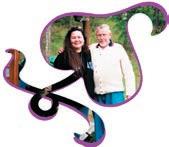
From the shores of our Mighty Mackenzie River
To the shores of the Ob River in Russia
From the shores of our Beautiful Beaufort Sea
To the shores of the Pacific Ocean
From the shores of our Great Slave Lake
To the shores of the North Pacific in Japan
No matter where I travel;
Where ever I go; you go too
Because I carry you in my heart
Thank you for all you do
I am proud to be ‘my father’s daughter'
Enjoy your 80th year
Love Always
Your Lil’ Girl
Brendalynn Inuk* Mamayuak Trennert

JANUARY STARTED OFF WITH A WONDERFUL BANG! The Hamlet Recreation Committee led the community into 2006 with the annual “tree burning ritual” & fireworks. The community then had a truck parade and hot refreshments at the Sittichinli Complex. It was a terrific time and a big thank you to Dean McLeod and the Hamlet maintenance crew and the volunteers who made this event another memorable one.
The New Year could not be expected to start slowly when there is so much action and events held by various organizations! Sandra and Mary Gordon from the Recreation Leadership Program did a presentation for senior high students at MK School. The program is sponsored by Aurora College, there were a lot of good questions and discussion. Thanks to both ladies for a job well done. The school also had a presentation on health matters and making healthy choices by Claudia Ritchie & Leann Tait on February 1st.
The staff and students of MKS were delighted to hear on January 16th, that their principal Velma Illasiak has won the National Excellence Principal Award for NWT. She traveled down to Toronto from Feb.11th to the 17th to join 30 other winners for a week of learning-sharing forums and a gala dinner, where winners were presented their awards. The students and staff sent Velma off with love and wish her continued success!
Lorna Keating at Aurora College have been busy getting programs delivered.
A gun safety course was offered January 18th to 19th. Nine students attended and all passed the course, thanks to instructor Chris Gavin. Lorna is working on getting a Drivers Course-Learners License Program started in the next few weeks. If you are available, the course has a capacity for 10 regular students and 5 open seats.
Junior and Aklavik Rangers had a week's worth of training with Sergeant Ed Patten of the Department of National Defense. One of the training presentations for junior rangers was on Bullying and Sexual Harassment; Ella Archie & Jerry Arey of the Aklavik Rangers helped too. They were valuable resources for training, and were well received by the community. Trudy Kogiak of the Aklavik Junior Rangers will represent us in a shooting competition in March 2006 in Yellowknife.
Lorna Storr held a Cake Walk at MK School on Friday Jan 20th to help raise funds for some of the students heading off to the Arctic Winter Games. It benefited Crystal Koe (Dene Games) and Brenton McGee (Snowshoeing).
The whole student body was busy with final exams for the first semester, and Senior High students have been working hard to get ready for the English Departmental Exams on January 19th and 26th. Congratulations to all students for their hard work and effort. We encourage you to continue with the good work in the second semester. Beginning January 16th, Aurora College offered a Kitchen
Helper Course using the school’s home economic facility. The instructor, Tim Tigiglok and his assistant Kathy Paul are from the community. There were about14 students who began the first week with environmental safety, first aid and an orientation by Nellie Gruben from the College. The aromas coming from the kitchen causes much salivation, it is hard to not be tempted even if you are on a diet. We wish the students luck and success.
January 23rd was the Federal Election. It went smoothly as community members contributed significantly. Thank you to Returning officer Mina McLeod, and deputy returning officers Melinda McGee, Terry Lynn Storr and Angela Storr. The turnout at the polling station was satisfactory.
The Aklavik District Education Authority membership had their first meeting of the year on January 24th. The departing membership is commended for their hard work and service to the students and staff of MK School. There will be an official dinner & acknowledgement later in the school year. We extend a big welcome to the incoming membership. We look forward to their continued dedication to education in Aklavik.
John Chabot, former NHL hockey player of the Detroit Red Wings, came to visit the school on Wednesday January 25th. He gave motivational speeches to students about staying in school, setting goals for themselves and working hard
to achieve their goals. Students & staff alike enjoyed it. He also participated in a Hockey Clinic for all ages here. A big thanks to the Recreation Committee of the Hamlet for this wonderful opportunity.
Family Literacy Day was on January 27th and school staff Ann Galway, Sheila Greenland, Kaya Erhart, Shirley Koe & Alana Gale-Perry are much appreciated for their organization of the Poster Contest and Lunch Hour Read Along. Thank you also to Deana Greenland and Terry Lynn Storr for assisting with the Pre-School Literacy event. We all had a fun time, and will enjoy more reading activities in February. Remember, reading to your child for 15 minutes a day makes a big difference in their ability to read and write. A big thank you to the Aurora College students who provided lunch for this event.
Carolyn Robin Moore of Encana, along with Al Wong, Sandy Markin and Rinde Powell visited the school and talked about health and safety when traveling on school trips, especially cultural activities on the land. Encana is committed
to partnership and being part of the students’ bright futures. They are in the Beaufort Delta participating in the public oil & gas hearings. They also donated Personal Locator Beacons to the six ISR schools. Thank you for this wonderful gift!
The Aklavik Curling Rink was opened to the public in January. There were several committee meetings to prepare for the remainder of the season. Gary Hoffman of the NWT Curling Association did curling clinics with students of MK from grade 6 to Senior High on February 1st. Everyone was happy to have access to the rink again.
Rachael Munday, the Nurse in Charge went for a well-deserved three-week holiday. She was replaced by Myrella Bellerose. The Dental group came in and many community members had their dental needs tended to. The staff at the local nursing station is busy with daily working hard to meet the community's health needs. FEST Bus service is now operational, a majority of travel during the ice road season can be arranged through them.
Moose Kerr students, parents and staff ended the month of January with
winter fest activities. This is a fun filled week: Monday-Steve Urkel Day, TuesdayInside out/Backwards Day, WednesdayCrazy Hair and School Colour Day, Thursday-Unmatched Shoe Day and Friday was Pajama & Bed head Day. It was a wacky week!
We should always be conscientious of power & energy. Brian Campbell of NTPC explored this topic in a presentation for grade 5 and 6 students on February 8th. The kids enjoyed it very much!
Moose Kerr staff were off the week of February 27th to March 3rd, they went to Edmonton for a Balanced Literacy workshop and the Greater Edmonton TeacherConference. This was a great time for the staff to obtain new ideas and teaching tools. February was a month filled with sweetheart box socials, dances & valentine parties. You will hear more about these next issue! Also Moose Kerr School hosted a Secret Pal week for staff and students, who exchanged cards and party treats. Happy Valentines everyone!

INUVIK HAS BEEN BUSY WITH QUITE A NUMBER OF CELEBRATIONS AND EVENTS! Both young and old from all over the ISR and further got together on 31st December 2006, for a New Year’s Feast and Dance at Ingamo Hall. The large turnout enjoyed drum dancing by the Inuvik Dancers and Drummers, and then took their turn square dancing, there was so much joy in celebrating with family and friends! There was a delicious spread sponsored by the Inuvialuit and Gwich’in, caribou meat in gravy and baked ham with pineapples, even dried fish and dessert. It was also Leonard Harry’s 65th birthday! He drum danced along at various points that night, and the smile on his face showed how happy he was to have so many celebrating with him.
On January 7th , The Sunrise Festival was a success. The town gathered at a location near the golf course to enjoy sipping hot chocolate and to watch fireworks! Our toes were cold but our hearts warm as the fireworks burst over our heads in beautiful formations, and you could hear children and adults going “ooh…wow…” in awe throughout the show. The two bonfires helped as we all huddled around them. Thank you Town of Inuvik, for the gift! It really helped chase away the blues from the darkness. Chelsea Elias also celebrated her 10 th birthday on the 6th of January. Her friends want to say “Happy Birthday” and the same to Shanna Allen, who turns 12 years old on Feb 21st!
Happy 65th Birthday Leonard Harry!!
THIS MONTH IS THE RECOGNITION OF BILLY DAY’S CONTRIBUTIONS TO THE ABORIGINAL COMMUNITY. He is the recipient of the National Aboriginal Achievement Award for Environment this year. The awards ceremony was held in Vancouver on the 27th of January. It was televised on APTN and Global TV the next evening. If you ask anyone who lives in the ISR who Billy Day is, they will tell you he is a man who spent most of his life advocating for the protection of the environment and wildlife. He also used his translation and communication skills for public good, and is a key negotiator of the IFA. He traveled extensively to all the communities, speaking to people in their languages to create understanding and awareness of Inuvialuit issues. Many still remember how well spoken he was on radio programs, and are thankful that although Billy did not like being in the limelight, he was willing to be there speaking for his people when they needed to get their rights recognized by the government. Congratulations Billy Day!


ARCTIC WINTER GAMES TERRITORIALS CAME TO A CONCLUSION ON THE 13TH OF JANUARY. Heats were held at Ingamo Hall, the Midnight Sun Recreation Center, SAM School and the Aurora College Gym. The events for competition were Soccer16 and under boys, Bantam Hockey, Wrestling and Arctic Sports All Categories. What was truly inspiring at the games was the spirit of co-operation amongst the competitors. Although the Junior Girls Arctic Games trials had to be repeated on 13th January when results were tied on the 12th , the weary girls continued to urge each other on; at one point, Vanessa Anikina had some doubts about whether she could kick the “seal” in the Alaskan High Kick but Kristen Green, her competitor was there by her side, showing her how she should stretch and prepare herself for the kick. Sachs Harbour coach Christina Elias said, “In Arctic sports, they always try to help each other out”.
BUSINESS IS GOOD FOR INUVIK IN THESE USUALLY QUIET WINTER MONTHS . All the hotels are booked, and taxis are zipping around town as the public hearings for the National Energy Board and Joint Review Panel kick off at the Midnight Sun Recreation Center on Jan 25th . Right now, the hearings are very technical, but it will be more interesting as the Joint Review Panels start their hearings to collect information on social and environmental impacts of the Mackenzie Gas Project on February 14 th . Anyone can speak up as long as you sign up
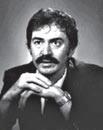
- Beaufort Sea Integrated Management Planning Initiative

-Development of first proposed Marine Protected Area in the Western Arctic, Tarium Niryatait
-Founding Member of Arctic Borderlands Ecological Knowledge Co-operative

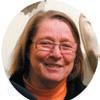


-First President of COPE (Committee for Original People’s Entitlement)
-Key signatory for IFA
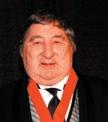
at the door! Do take this opportunity to share your opinions, as the NEB will weigh all evidence and opinions before making its final decision.
THE JOINT SECRETARIAT HAD A SERIES OF MEETINGS HERE IN JANUARY.
Boogie Pokiak conducted a Cultural Awareness Workshop at Aurora College January 16 th to 17th . Many working for DFO in the south attended to learn about Traditional Knowledge and the history of the Inuvialuit.
THE SALVATION ARMY IN YELLOWKNIFE BROUGHT THEIR C RACKBUSTERS WORKSHOP TO INUVIK FEBRUARY 7 TH TO THE 10TH. The 4-day workshop was developed in response to a five-year trend of noted increase in substance abuse across the North. This workshop allowed those in a supportive role and the general public to learn about resources available for them in the NWT and included training to help address the lack of early stage recovery support. It was taught that working with substance abusers through the stages of change could enable them to eventually make informed decisions. This adds to the positive impact of anti-tobacco programs and wellness programs implemented at the youth centre this month.
SCHOLARSHIPS WERE AWARDED TO TRADITIONAL ARTS STUDENTS BY ATCO TO LETIFA RUBEN AND MAGGIE PAPIK, AND FROM CIBC/GNAF TO MARY O'KEENA. This will help provide opportunities to better their skills and marketing experience. These artists can bring their skills back home to help other artists practice the self empowering culture of traditional arts. They even had a fashion show, whic h was lots of fun. We will be interview ing them in the next issue!
Onceagain the community of Tuktoyaktuk celebrated New Years with fireworks and a couple of bonfires. They were set off across the island.
Congratulations to Jenna and Curtis Wolki who officially married on January 14th , in Jenna’s hometown of London, Ontario. They honeymooned in Barbados and returned February 4th
On the 2nd – Catherine Mangelana, 7th – James Pokiak, 11th – Karra Dillon, 18 th – Stanley Felix, 14th – Kim and Kira Loreen, 20 th – Susie Tedjuk, 23rd – Terri-Lee Kuptana, 25th – Anna Marie Cameron and Edgar Kotokak III, 27th – Eddie Dillon, 28 th – Lucy Cockney and 31st – Tina and Jana. The community had problems with getting power for two days on January 23rd and 24th , as there was a storm. Fortunately the NWT Power Corporation maintenance was able to drive in on the ice road to fix the problem.
February Birthdays:
6th - Desmond Loreen, 7th – Peter Nogasak, 8 th – Benny Felix, 14th – Amber Joy Gruben and Molly Umoak, 16th – Christien Mangelana, 21st – Alexa (lovey, loving), 24th – Takisha Koko and Meeka Elizabeth, 27th – Dennis Raddi Jr. and Eileen Thrasher in Paulatuk! Happy Birthday!
Anniversary Greetings for February:
14th – Happy Wedding Anniversary to these two couples, John and Mabel Noksana; Joe and Mary Teddy!
24th – Happy Wedding Anniversary Eileen and Fred Thrasher!
The SAO reported that the hamlet has put out public tenders to service the community’s needs. The new contract starts April 1st . The council is also still lobbying for O & M funding from the government.
Recreation activities are scheduled for youth and adults six days a week. Kitti Hall was used for meetings and programs were held at Mangilaluk School every night.
In January, there was a dodge ball tournament held for youths and adults, but only the adult’s tournament took place as there was a $5 charge most youth did not come up with. There were three teams participating.
A 3-on-3 Hockey Tournament was held on the 27th and 28 th . Six teams participated; each team was required to have an old timer and a youth on the team. The outstanding old timer with the highest score was Pat Kuptana. Erwin Elias had the highest points for Senior Men’s and Garfield got Most Outstanding
February 15th - Apprenticeship and Occupational Certification Recognition Celebration in InuvikNellie Cournoyea commended Roland Kikoak for his dedication to his work as an Environmental Officer, and then presented him with a Beaufort Delta Special Award.

Goalie. Kane Raddi won $50 for hitting the target on the goalie net.
In February, the basketbal tournament is held, and in March, the Volleyball tournament.
The JJYC (Jason Jacobson Youth Center) has started a recycle drive. Bottles and containers in the bin are collected every Wednesday and Sunday. It is going very well, youth are volunteering with this program every Sunday.
On the 10 th February weekend, Lee Mandeville and his father came to town to perform for the Valentine’s Dance on the 10 th and 11th
The office reported that the unemployment list has doubled since last month. Two individuals were successful in applying for 2 months of Heavy Equipment Operators Training in Inuvik. Two other applicants were successful in getting trained in culinary skills, one in Fort Smith and the other at Aklavik.
The TCC offices will soon have Internet set up. It will make communications easier! Lucy Dillon, Debbi Raddi, Terry-Lee Kuptana and Elsie Nuttal worked together on this detailed report and will donate their remuneration to fund activities for youth. Tusaayaksat appreciates them, all the other writers and photo contributors, for helping us stay in touch and create a better magazine!
Tusaayaksat caught up with some Inuvialuit of all ages, to ask them what they like most about their culture. Some people provided short and sweet answers, like Bryon O’kheena from Ulukhaktok who said “I like drum dancing” before he rushed off to join a square dance; others provided food for thought and heartfelt responses. The overall feeling we got was - there is a lot to celebrate about being Inuvialuit! Here is what they said.
Winnie Elanik, Elder, Aklavik
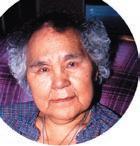
“I was brought up on the land, so I really enjoy being on the land. Now that I am an elder, my family takes me out on the land when they get a chance. Summer’s almost here, we are looking forward to it.”
Richard Carpenter, Sachs Harbour
“The people look after each other. When you go all over the north, the other communities always accept you as you are. They feed and clothe you, and make sure you have a place to stay. Our people are friendly.”
Leonard Harry, Inuvik, Elder
Pat Thrasher, Paulatuk
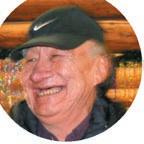
“Our country. The land is plentiful and free. People are friendly, we have a lot of relatives out in the communities.”
Andrew Bernhardt, Inuvik, 16
"I like everything about my culture. The best part is hunting, going out and being able to stay on the land."
Roy Ipana, Town Foreman of Inuvik Works Project
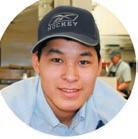

“I am proud of what we brought to this world as Inuvialuit, and the way we adapted when change came along. We are adaptable people, we adapt to weather, situations, and anything in this world. Global warming is not something we can do much about, unfortunately. Who knew that 20 years ago that it would happen? We have to adapt and go on living as best as we can.”
“As for drum dancing, just start up the music and it makes us perk up! It has been going on for centuries; it’s part of our heritage. I encourage all young people to join in. I don’t dance, but I enjoy watching my people dance more than anything else. We always put up a good show for tourists, and the more we dance, the better we get.”
“What do I like about being Inuvialuit? Drum dancing, hunting, living on the land.”


“The best place to go is on the land, but I haven’t done it yet this year, it’s too expensive.”
“I also like drum dancing. I used to be good at it. I learnt from my mum and dad. It’s good exercise, and prepares us for hunting and winter games. We have to exercise all the time, so we won’t have problems when it comes to playing in the games.”(He laughs.)
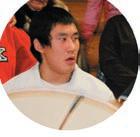
Charlie Thrasher, Elder, Paulatuk
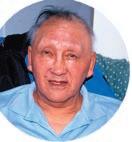
“We take care of each other. I lived with my parents, and enjoyed working to make a living, so I can take care of them.”
Sarah
Kuptana, Ulukhaktok“I especially like how we get to go hunting on the land. I hunt around Ulukhaktok. We have char, caribou and seal. It’s great to be out in nature, the scenery is beautiful. I love seeing caribou, but I haven’t seen one for a while. I like drum dancing too.”
Lilias Mitchelner, Inuvik
“Inuvialuit like to be independent and rely on ourselves. When I was young, my father became blind, but he would still chop wood everyday. When we came home from school, my dad would have fish for us. Even though other people were worried for him and said we shouldn’t let him chop wood or fish, he was happy to provide for his family. He would walk across the river with a stick, hitting the ice to find air holes. In the same way, I value family. I take time to look after my children.”
Neta & Shanna Allen, 9 & 11 years old, Inuvik
Neta: “We get to have Inuvialuktun classes in school! My favorite thing to say is “Taughirniarving mukluk” which means “Let’s go to the store”. Shanna: “We also get to do special crafts and games. We made the napatchuk in school last year.”
by Zoe HoDuane Drescher, Inuvik, 19

"I like the stories about the past, how our people survived on their own without guns etc. I like the singing and dancing, I jig and wear traditional clothes."
Linda Firth, Inuvik, 13 "I like travelling on the land, fishing and hunting."
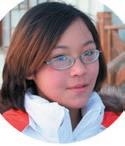
Marilyn Maring, Inuvik, 13


"I like it when go out in the bush, we set up snares for lynx, foxes and wolverines. We caught two foxes once. My dad usually skins them."
Chelsea Elias, 10 years, Inuvik


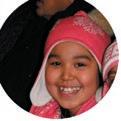

“The language. I know how to count to 10. My favorite word is qulinrutailaq, it means number 9.”
Freddie Rogers, Lives off the land part time
“I didn’t have a very good education. My skills are learnt on the land, and I find living to feel best on the land. Being Inuvialuit— it’s hard to describe what it is, but it’s always good to be proud of who you are, just don’t get too prideful as it can hurt you!”
“If I can’t get a job in town, I know what I have to do to survive by living off the land. And I don’t have to kiss nothing” (he laughs).
“I was raised off the land for most of my life, but I lost part of my culture when I was in school for 10 years. I am trying to get it back. I have re-learnt most of the skills like trapping and fishing, but I’ve lost my language, and I miss it the most.”
“It hurts me when I try to speak Inuvialuktun with the elderly, and cannot express what I mean because I only know the basic words. My stepsister, Sandra Ipana teaches Inuvialuktun in school. I am glad the younger generation has the chance to get back into the flow.”
SUN, SUN, YOU HAVE RISEN YOU ARE BRIGHT. THANK YOU FOR COMING BACK. SUN SUN YOU HAVE RISEN YOU ARE HOT TOO THANK YOU FOR COMING BACK

CHANNEL 96 CABLE & CHANNEL 269 SATELLITE
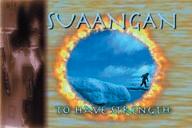
Thursdays at 7:30pm
Saturdays at 6:00 pm

All of Our People
Mondays at 9:00 pm
Tuesdays at 8:00 am & 12:00 pm
Thursdays at 4:30 pm